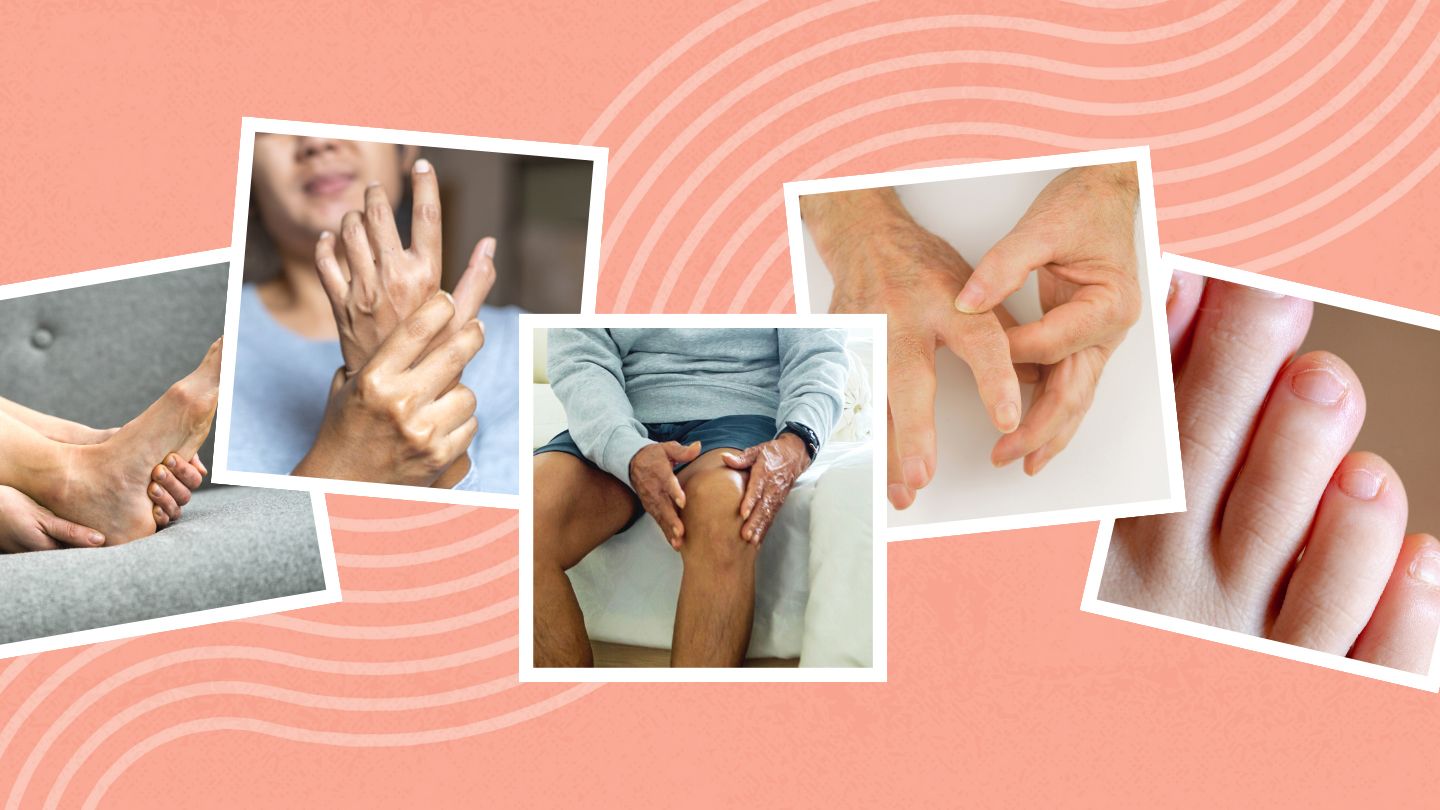3. How to Care for Ankle Joints Affected by RA
Where: Both ankles, generally after other joints in the feet.
What worsens it: That’s still under investigation, though ongoing disease activity and subsequent joint damage are the main culprits, notes Huffman. Early signs of ankle involvement include difficulty with ramps and stairs, and, as the disease progresses, even walking and standing can become painful, notes the AAOS.
What helps: Special orthotics, such as inserts for your shoes, and braces that support the ankle can lessen pain and make walking easier.
When joints ache, stick to low-impact exercises such as swimming and biking. Huffman points out that “the research supporting this focuses on longer-term RA that has led to ankle damage (secondary osteoarthritis) where weight-bearing exercise may increase the joint damage.” She suggests her patients do whatever activity they can tolerate — that any is better than none and that “the chance they are doing something to worsen the arthritis is very small.”
4. When RA Causes Pain in Your Wrists
Where: Both wrists, often early in the disease. The pain often affects the joint between the radius and ulna, the bones of the forearm, at the wrist.
What worsens it: “If the wrists are inflamed, more intense activities may be less comfortable, but some activity — especially movement without resistance — is better than none,” says Huffman. And again, the chance that activity increases the RA inflammatory process is small, per Huffman, who encourages range of motion exercises.
What helps: Medications that help ease inflammation, pain, and stiffness, including oral medications and cortisone injections, can help. You may want to check in with your rheumatologist to minimize duration of the flare, if possible. Assistive devices such as reachers, grabbers, and jar openers — special tools that make it easier to grip objects — can help lessen strain. Wrist braces and gentle exercises recommended by your doctor or a therapist may also help.
5. Finger Joints and Rheumatoid Arthritis
Where: The knuckles in the middle and at the base of the fingers.
What worsens it: Gripping objects or using the fingers repetitively during a flare can worsen symptoms, though Huffman notes that some activity of these joints is better than none.
What helps: “During a severe flare,” says Michelle J. Ormseth, MD, a rheumatologist at Vanderbilt University Medical Center in Nashville, Tennessee, “use of involved joints may need to be limited to protect the joints and reduce pain until the disease is under control again.”
Look for assistive devices to help you with tasks like putting on shoes, zipping and buttoning clothes, and grabbing and gripping objects.
Consider trying helpful strategies like adding accessories to doorknobs so they can be turned more easily, using Velcro fasteners on clothing, switching to lightweight pots and pans, and adding foam padding to pens and pencils.
Cold packs can relieve painful, swollen hands, while heat can reduce stiffness; apply them for no more than 20 minutes at a time, Cleveland Clinic recommends. Finger splints can also relieve pain in your fingers.
The Takeaway
- While the symptoms of rheumatoid arthritis vary from person to person, certain joints tend to be more involved than others: the fingers, wrists, knees, ankles, and feet.
- To limit joint damage, it’s important to follow your RA treatment medication regimen and make healthy lifestyle choices, like exercising, not smoking, and eating an anti-inflammatory diet.
- But when certain joints are in pain, supportive footwear, braces or splints, some adaptive devices, and hot and cold therapy can alleviate symptoms.
Additional reporting by Deborah Shapiro.
Read the full article here




